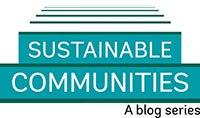Each year, about half a million people are killed by intentional homicide. That means one life is lost to violence per minute worldwide.
Latin America and Caribbean is among the hardest hit by chronic violence. Today, the region still sees an average rate of 24 homicides per 100,000 inhabitants—more than twice the World Health Organization (WHO)’s threshold for endemic violence.
If violence is an epidemic, youth are—by far—the largest risk group. In Latin America, the homicide rate for males aged 15-24 reaches 92 per 100,000, almost four times the regional average. Young people aged 25-29 years, predominately males, are also the main perpetrators of crime and violence, according to an upcoming World Bank report.
Endemic violence also translates into less productivity, poorer health outcomes and high security costs. The cumulative cost of violence is staggering—up to 10% of GDP in some countries—with negative long-term consequences on human, social, economic, and sustainable development.
The good news is that violence can be prevented. For example, cities like Medellin in Colombia and Diadema in Brazil have dramatically reduced homicide rate over the last few decades, thanks to tailored solutions backed by robust data analysis and a “whole-of-society” approach.
In this video, we will discuss why violence is an important development issue, how countries and cities can effectively fight violence and crime, and what the World Bank and its partners are doing to ensure security and opportunity for all—especially youth and the urban poor.
Related:
- Feature story: Urban Violence: A Challenge of Epidemic Proportions
- Feature story: Violence in Latin America: An epidemic worse than Ebola or AIDS?
- Blog post: Obstacles to development: what data are available on fragility, conflict and violence?




Join the Conversation